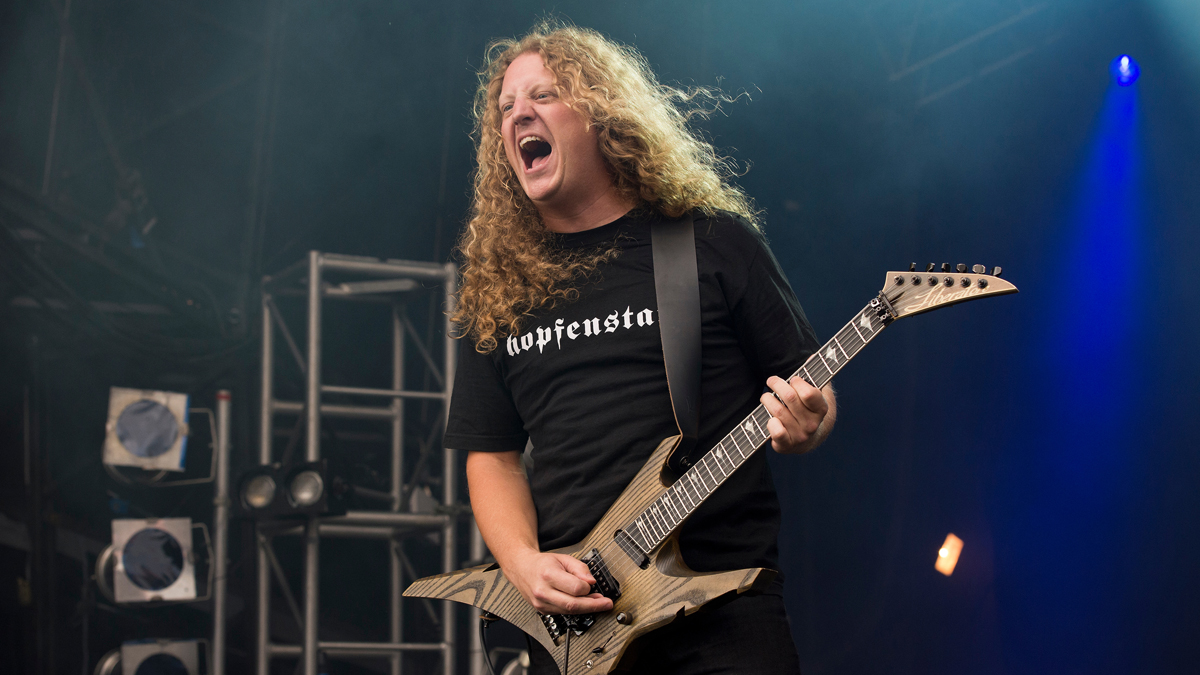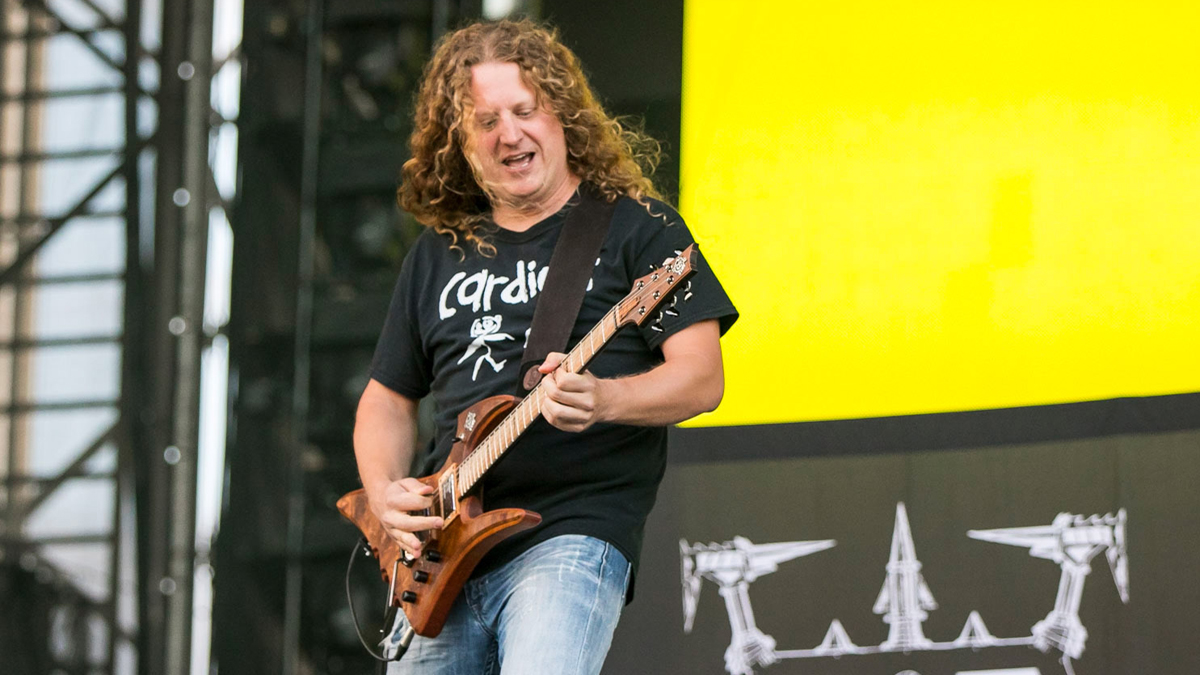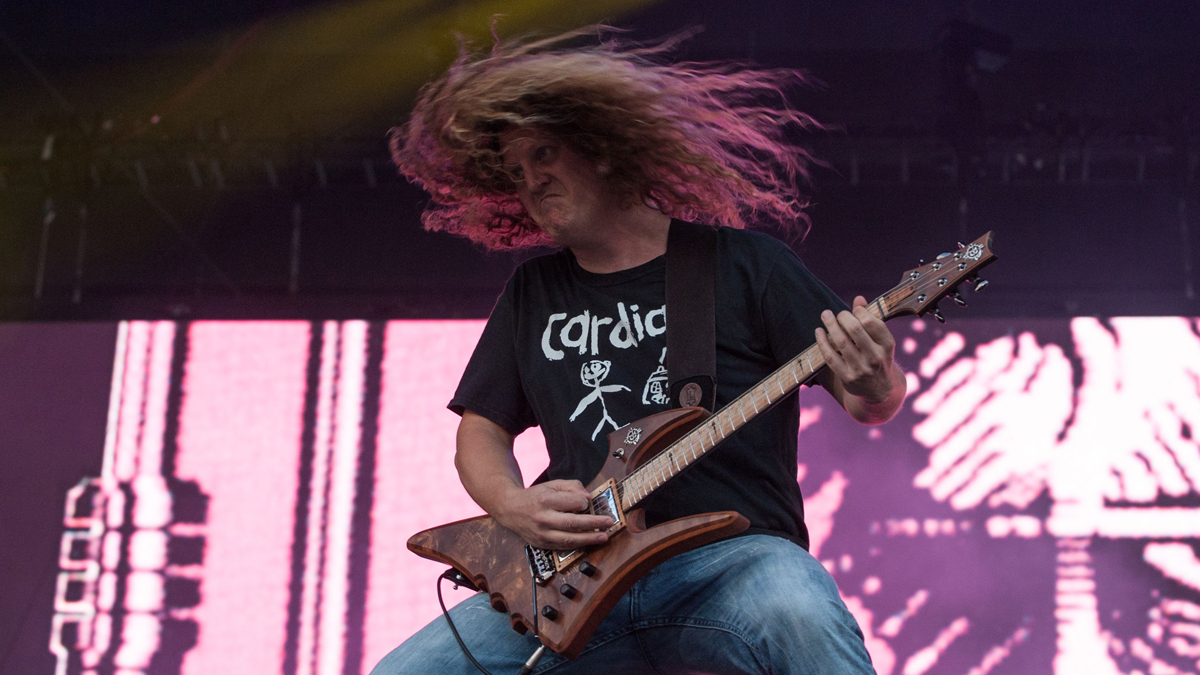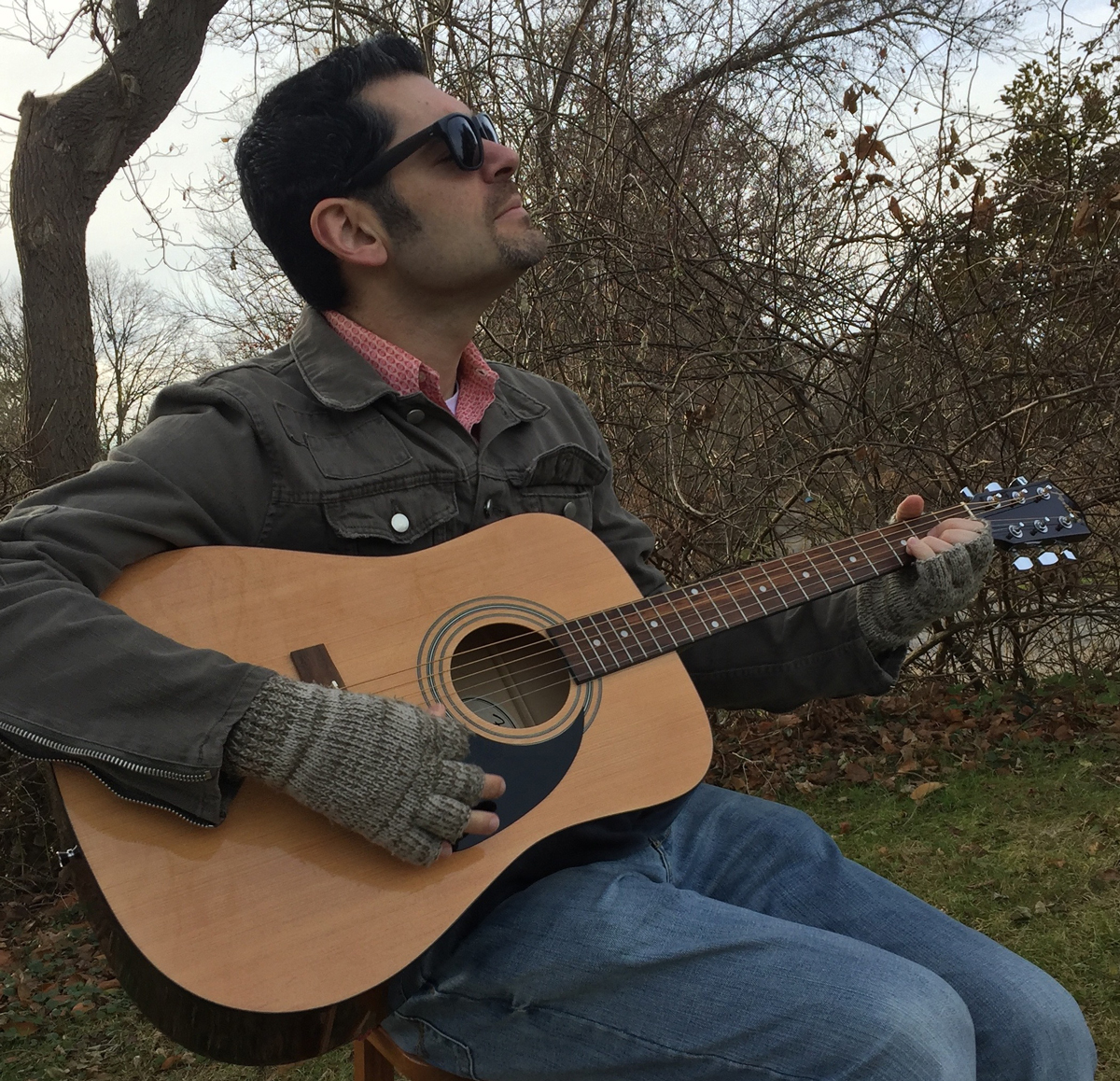Daniel "Chewy" Mongrain: "When I was 17 or 18, I transcribed Jason Becker's entire Perpetual Burn album. I still have the manuscript – it’s about a hundred pages!"
The Voivod metaller discusses his biggest influences, the impact of Denis "Piggy" D'Amour, and how he approached his instrument on the band's new LP, Synchro Anarchy

Canada has long been known for their prog-rock exports – Rush, of course, immediately spring to mind. However, Voivod are the only band that can be described as sci-fi prog thrash, and now the boundary-bending outfit are back with 15th studio album, Synchro Anarchy.
Since 2008, Voivod’s guitarist has been Daniel “Chewy” Mongrain, who, like his predecessor Denis “Piggy” D’Amour – the group’s co-founding member, who passed away in 2005 – has a soft spot for dissonant chords, stop-start riffing, and tricky solos.
Mongrain’s six-string talents are present throughout the forthcoming album – particularly on standout tracks such as Planet Eaters, Paranormalium, and his personal favorite, Holographic Thinking.
Originally formed in 1982 in Quebec, Voivod began as a straight-ahead thrash band (evidenced from 1984’s War and Pain and 1986’s Rrröööaaarrr), before they came up with their own truly unique approach and style on 1989’s Nothingface and 1991’s Angel Rat. Despite several lineup changes (Jason Newsted was a member at one point), Voivod went on to issue some of their best albums later in their career, such as 2018’s The Wake, and now, Synchro Anarchy.
Mongrain spoke with Guitar World shortly before the album’s release to discuss his strangely shaped signature guitar, the influence Piggy had on his playing, and his favorite Voivod classics.
From a guitar perspective, how did you approach Synchro Anarchy?
“It was a very intense journey to write the album, actually. We ‘woke up’ in the middle of a strange year-and-a-half, when we weren't jamming together. We lost touch with each other, but I had a few ideas recorded from the year before. Just snippets.
All the latest guitar news, interviews, lessons, reviews, deals and more, direct to your inbox!
“At some point, we realized, ‘We have an album to create. Let’s do it.’ So, me and [drummer] Michel ‘Away’ Langevin started to put together the ideas he thought might go well together, tempo-wise and structure-wise. We sent files to each other, and I began working on demos at home by recording bass and guitar parts.
When I write music, I don’t think necessarily about guitar. The guitar is just a medium to use to put your ideas out there
“When I write music, I don’t think necessarily about guitar. I think about chords, colors and rhythm: I think about music more than I think about the guitar. The guitar is just a medium to use to put your ideas out there. It’s much more about what you hear inside your head and feel inside your heart.
“There’s some riffing that's thematic of the metal genre, but sometimes – like [the late Denis] Piggy [D'Amour] did in the past – we use the guitar almost like how a keyboard would play in a band. Also, the bass guitar in Voivod plays the role of a second guitar.
“There’s a lot of dialog between the instruments, and I wanted to add that into the music, as well.”

What was your guitar setup for the album?
“I have a Lapointe [Backbones] amp and I use a Bond guitar [signature model, with DiMarzio PAF 36th Anniversary pickups]. As a kid, when I watched the first Voivod videos, I remember Piggy’s guitars were crazy-shaped, so I wanted a similarly strange-shaped guitar.
“I use a little boost at the input and not much distortion. When I play chords, it’s more like a keyboard player, so there are a lot of stacked fourths or tritones in Voivod’s music.
If there’s too much distortion, it kills the chord, and if there’s not enough, it doesn’t sound like heavy riffing. You have to find the balance
“If there’s too much distortion, it kills the chord, and if there’s not enough, it doesn’t sound like heavy riffing. You have to find the balance between clean sound and distorted sound.
“I used a few tremolos, delays, and a pitch-shifter. I worked with a Fractal Audio FM9 recently, although I used the sound of the amp: I didn’t use IRs [Impulse Responses] on the album. I really wanted the real deal, with the microphone and speaker.
“Another pedal I use – but I don’t think they make it anymore – is an Allan Holdsworth Signature Overdrive/Boost by J. Rockett. I use it at the input of the amp, so it boosts it a little bit. And I used a Holy Grail Electro-Harmonix Reverb.”
Guitar-wise, which song on Synchro Anarchy are you most proud of?
“The solo on Holographic Thinking might be my favorite. It was pretty much improvised, and when I listen to it, I feel like it is spontaneous and true. It was not overworked, and it’s ‘breathing’ – there are a lot of long notes, even though there is a faster part.
“It’s that kind of magical moment that we try and catch as musicians all the time – playing with the spontaneity and improvisational part of the music. When it happens, you’re really proud and happy about it.”
Who are some of your main guitar influences?
“I have a lot, but I am a big fan of Allan Holdsworth’s music. Not just his soloing, but his harmony and the way he thinks about the music, time, and composition. I studied his music quite a bit.
“When I was younger, I had a fixation on Jason Becker, because he was such a crazy guitar player at such a young age. When I was 17 or 18, I transcribed the entire Perpetual Burn album. I still have the manuscript – it’s about a hundred pages.
“I studied all the shredders when I was younger – Steve Vai, Yngwie Malmsteen, Joe Satriani – and it developed my technique and ability to play clean and fast, and to understand the aesthetics of how to approach the guitar in music.
“And, of course, I listened to guys like John Scofield and Pat Metheny. I dug deeper into jazz, and learned a lot more about articulation and how to play the right notes over the right chords. It became more like an instinct at some point: you don’t think about chords and scales anymore, you just hear them as you learn the language and you can speak it. The more spontaneous you can be with it, the more satisfying it is.
“Also, Wayne Krantz and Scott Henderson in the latest decade influenced me a lot.”

How much of an influence was Piggy on your guitar playing?
“On my guitar playing, not so much. I have a very different playing style to Piggy. I had to adjust a little bit at the beginning, because I was in more extreme metal bands before.
“I had to adjust to play lighter on the strings. I think Piggy used to play with 8s – very thin strings. I was playing too hard and it killed the sound. When you play open chords with a lot of dissonance, it has to ring. He influenced me in that way.
“But his influence was much more in the composition side and understanding the dialog between instruments. He was very influenced by progressive rock music of the ‘70s, and he made me discover that through Voivod.
“I was interested in learning theory because of Voivod, and studying music afterwards. All the curiosity was planted by Voivod’s music and Piggy’s approach to composition.
“The band didn’t approach the music like a regular metal band. When I was younger, you’d hear Voivod and it was very different compared to most other metal bands from that era. I think he influenced me much more as a composer than as a guitar player.”
Was Piggy one of the first metal guitarists to incorporate dissonant-sounding chords into his style?
“In metal, he certainly brought it more up front. But if you listen to Robert Fripp playing Red [1974], you can hear where the tritone was coming from. He was really influenced by King Crimson. So, in metal, he was one of the first to use the dissonance as a main color in a band.”
Which Voivod songs do you think featured Piggy’s best playing?
“This past summer, we did two stream sessions, and we played the whole Dimension Hatröss and Nothingface albums. I really liked learning those songs. There were songs there that the band hadn’t played since the album came out.
“So, X-Ray Mirror was one of them. Cosmic Drama from Dimension Hatröss. Some hidden gems in the albums like that.
“One of the songs that was most challenging – we played it on one tour because it’s 17 minutes long – is Jack Luminous from The Outer Limits album. We did it on a special occasion at the Roadburn Festival in Tilburg. It is very progressive with a mellow part in the middle. It was a big challenge, but that song was a dream come true to play.”
- Synchro Anarchy is available now.
Greg is a contributing writer at Guitar World. He has written for other outlets over the years, and has been lucky to interview some of his favorite all-time guitarists and bassists: Tony Iommi, Ace Frehley, Adrian Belew, Andy Summers, East Bay Ray, Billy Corgan, Alex Lifeson, Geddy Lee, Les Claypool, and Mike Watt, among others (and even took lessons from John Petrucci back in the summer of ’91!). He is the author of such books as Grunge Is Dead: The Oral History of Seattle Rock Music, Shredders: The Oral History of Speed Guitar (And More) and Touched by Magic: The Tommy Bolin Story.

